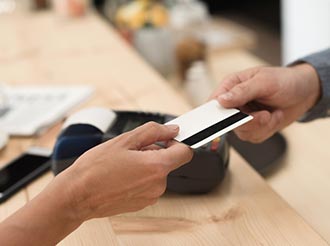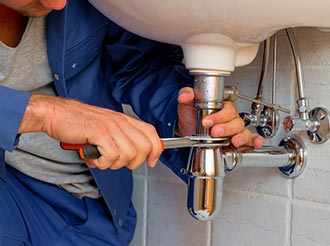
The leaves are slowly beginning to cover the tree branches again. Early flowers are budding, and the verdant, lush, hopefulness and beauty of late spring/early summer is finally here. As the birds begin singing in the mornings and the color returns to your backyard, you know it’s time to start yard work again.
You put your gloves on, get out the rake, and get ready to use your garden hose, when you run into a stumbling block: the hose bib is broken and cannot be safely attached (the bib, also spelled “bibb” and sometimes referred to as the “outdoor spigot”) is the faucet located on the exterior of your home that allows you to operate the hose. That is, unless, it’s broken and has a leak!
What Went Wrong?
Remember, there are major differences between indoor and outdoor plumbing. Indoor pipes are undoubtedly well-insulated, and some are even supplied with a constant source of controlled heat from the thermostat, virtually eliminating the possibility of indoor pipes freezing and bursting.
Protecting outdoor plumbing can take a bit more maintenance, planning, and guidance, but it can go a long way to protect you from serious damage. Just like knowing who to call, it’s important to know when to call. Some common signs that your hose bib is likely damaged, include:
- There is an accumulation of water, or water damage, in close proximity to where the bib attaches to the faucet.
- There is a visible crack in the bib.
- The hose will not properly attach to the bib.
Preventative Steps for Homeowners
There are certain preventative, proactive measures that you as a homeowner can take to greatly reduce the likelihood of a leaky or broken hose bib. For starters, you can winterize your hose by draining the lines of all water. One of the main reasons for freezing pipes and bibs is leftover water, which froze and expanded, causing all the damage in the first place.
Similarly, you can protect the hose bib by either relocating it or purchasing one that’s cold-resistant. While not all bibs can withstand freezing temperatures, some have a higher rating, keeping this emergency issue at bay.
Regardless of which option you choose, it’s important to work with a professional plumber. Our experts will get your bib installed right, so you can use it in the spring without skipping a beat.
The Damage Caused by Leaky Hose Bibs

The damage caused by leaky hose bibs depends on several factors, such as how long the bib has been leaking, how much water has escaped, and so forth. If a damaged hose bib is spotted early enough, you may be able to mitigate the damage.
However, damage can potentially include the following:
- Increased water bills.
- Considerable oversaturation of the lawn.
- Damage to the foundation, including cracks.
- Problems with the slab.
- Possible toxic mold development.
Don’t Get Hosed!
Don’t let a hose bib get in your way this spring. Take action now. Even though it’s May, and perhaps you did not winterize your hose, never fear. If your hose bib is showing evidence of leaking, call one of the professionals at S and J Plumbing to assess the situation and get it under control.
We offer a wide range of solutions to help get your hose bib back in working order. Whether it’s a matter of replacing the bib or you need to repair entire sections of plumbing, you can count on our experienced contractors for help. We do our best to work quickly because when it comes to leak-related plumbing issues, time can make all the difference.
Additionally, we can help you upgrade your hose bib to a more durable option, including some plumbing fixtures that are cold-resistant, cutting down on the chances for freezing in the first place. Give us a call at (847) 890-1599, and we’ll be sure to get your home back up and running, so you can enjoy the spring in your beautiful and healthy garden!




